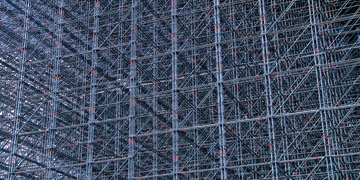Dipen Vijaykumar Trivedi, Chief Finance & Compliance Officer, Neev Infrastructure gives his insights on modular (prefab) construction vs conventional construction for hospitals in India

Private sector and visionary doctors turned entrepreneurs are playing a leading role in transforming and turning around the healthcare infrastructure in India. A patient-centric approach (where ‘holistic healing’ is the focus), backed by an ever improving state-of-the-art technology has ushered in a ‘Medicare’ revolution.
However, these thoughtfully designed healthcare institutes are built with large capital outlays, have a time value and they face an ever increasing risk of technology redundancy. Hence a timely commencement/ occupation of these hospitals is always in the best interest of all the stakeholders involved (promoters, investors, financiers, vendors, technology partners and the general public at large).
Apart from these tertiary healthcare centres and the super specialty hospitals, India also needs ‘low cost – quick time’ hospitals in tier-II, tier- III cities and the remote towns.
With an earlier occupation, guaranteed quality, design flexibility, improved site safety, the modular construction employing the ‘pre fab’ methodology is certainly an answer to all of the time, cost, quality and viability challenges.
However, every game has its set of rules which must be taken into cognizance before taking a plunge.
Rule 1: Prefab methodology is a great ‘time crasher’ but may not always be a great cost saver
While factoring a modular construction solution, the planners and designers will need to strike a judicious balance between the project ‘cost’ and the ‘time’ to completion.
Rule 2: Prefab is beneficial for structures with ‘repetitive features’
As healthcare organisations move towards more standardised environments and systematic approaches to care delivery, the approach of modular construction making use of the pre fab methodology is proving to be a great fit. The modular units work exceptionally well for a hospital with a repetitive design having identical patient rooms, examination rooms etc.
Rule 3: Nature of the construction activity will determine the extent of employing the ‘pre fab’ methodology
Greenfield projects offer an optimum scope for employing modular construction (pre fab methodology).
The pre fab methodology comes in very handy for large civil hospitals in India, undergoing modernisation or a capacity augmentation, characterised with huge patient foot falls in a day where operations cannot stop for long, in order to facilitate construction activity.
Rule 4: Plan and design a ‘scalable’ structure for the future as you employ pre fab
Healthcare projects in India irrespective of their location in megacities, mid cities, towns or a remote village, need a scalable healthcare facility to meet its ever increasing population. Pre fab methodology factors this need of ‘scalability’ and ensures that structure once built on pre fab can be augmented as and when the need arises.
Rule 5: The planning and design stage has to set a tone for the preferred mode of construction ‘pre fab’ or ‘traditional’
A switch over from the ‘traditional’ to the ‘prefab’ will only result in an exorbitant cost escalation beginning with costly foundations and steel reinforcements on account of a conventionally planned civil foundation.
Rule 6: Planning has to be thorough and elaborate to the finest indivisible unit
All the main contractors, fabricators and the technology providers necessarily need to be involved from the very inception of the design phase. The cost overruns may turn out to be very embarrassing even if the smallest of the modular components do not fit precisely at the time of assembling the structure at site. On site alterations are a strict ‘No’.
Rule 7: Prefab needs ‘skill’ on board and an integrated approach
Regardless of the degree of coordination prior to the construction, when highly complex architectural and engineering systems are conventionally installed at site, the ‘organisation’ is often lost, wasting time and material. This isn’t the case with prefab methodology.
Prefab would necessarily entail hiring seasoned subcontractors armed with high degree of engineering skills and workmanship. An efficient use of the ‘Building Information Modelling (BIM)’ discipline will go a long way in an apt execution of the project. The precise relationship between the BIM model and the fabricated components provide the hospital management and maintenance team with a high-fidelity understanding of what’s inside the walls and the ceilings, thereby greatly facilitating the future modification.
Rule 8: Transportation and logistics is not an insignificant cost head when the preferred mode of construction is ‘prefab’
On site conditions and the available space is a key determinant in assessing the feasibility and the viability of opting for a pre fab methodology. One will need to establish a pre cast yard in close proximity to the project site to minimise transportation costs.
The pre fab methodology can certainly become a game-changer once more and more of its success stories are out in public. It has a great potential of reducing the ‘build’ time by an astounding 50 per cent or more. Early ‘build’ hospitals will certainly facilitate catering to an ever increasing patient base, but also accentuate the ability of hospitals to commercially turnaround faster.
















